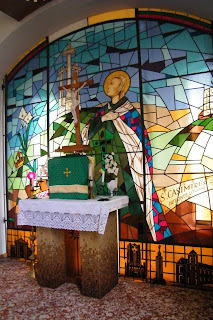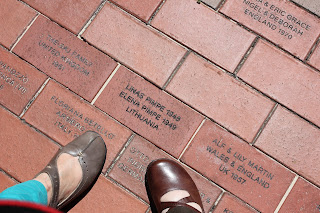There are many places around Australia that
allow you to record in some way your descendants name in a public monument. The Maritime Museum in Sydney has the Welcome
wall, and Adelaide has Settlement Square at the Migration Museum.
Recently my mother purchased a paver with
my maternal grandparents name and year of arrival in Australia stamped on it. My grandparents were both cremated with their
ashes scattered. There is no place to
lay flowers, no place I can see their names, until now.
Whether your family has always been here,
came as early colonists or are recent arrivals, there’s a place for you in the
Migration Museum’s Settlement Square. The pavers that form a striking ‘Tree of
Life’ pattern in Settlement Square are engraved with the names, places of
origin and dates of arrival of thousands of South Australian immigrants.
Settlement Square and its companion database of information about the families
thus recorded is a testament to the rich cultural diversity of South Australia.
The money that you purchase the brick with
goes into the Migration Museum Foundation. A tax-exempt incorporated
association which was set up in 2000. The Foundation exists as a
membership-based fund to support the Museum’s programs through interest raised
on the principal amount that is invested.
A great way to honour your ancestors and
support a fantastic museum.
Other Lithuanians who appear in the square
are;
Tadas Zurauskas 1948
Kostas Teodoras Tymukas 1948
Pulgis & Maria Andrusevicius 1949
Vaclovas Miliauskas 1948
Vaclovas & Susanna Germanas Lithuania
and Germany 1950
Bronius Vitkunas (Brian Newman) 1947.
You can find out more about Settlement square
at http://migration.historysa.com.au/foundation










